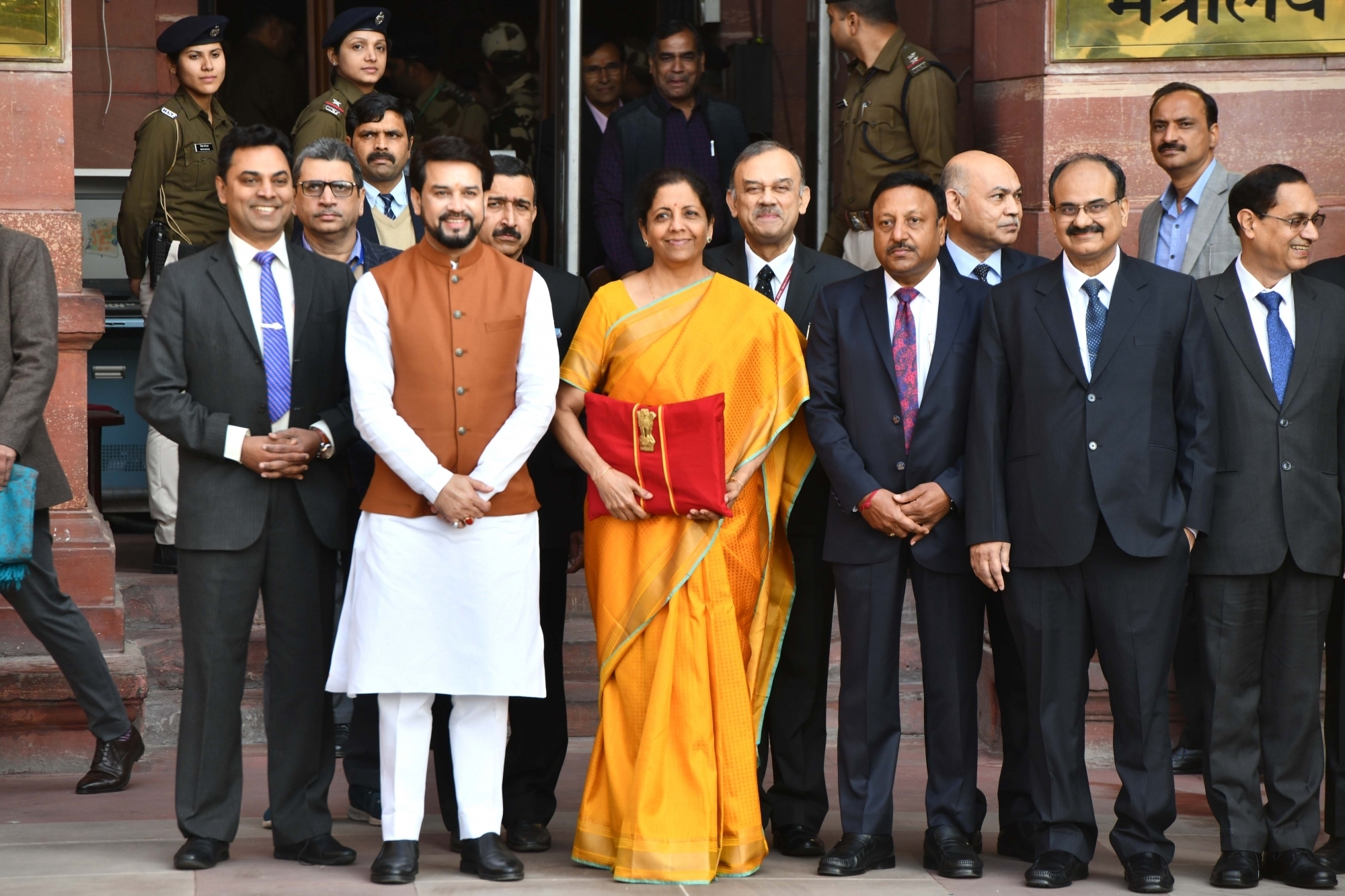New Delhi: In the longest Budget speech in Independent India, Finance Minister Nirmala Sitharaman aimed to outline India’s roadmap for economic revival and growth. At 2 hours, 37 minutes and counting, the Finance Minister stressed extensively on addressing the aspirations of a billion people and caring for them, even as many felt this Budget did not fully fix the core problem—spurring demand in Asia’s third largest economy. Coming at a time when India is facing an 11-year low in GDP and inflation at a 65-month high with lower tax collections, the Budget was expected to be a big game changing visionary economic roadmap to set India on the $5 trillion path. And the FM has tried to offer some relief to all sections. Giving in to the wish list and persistent demand of the middle class to cut taxes, the FM has made some tweaks in direct taxation, leaving more cash in the hands of the middle class with the hope it will boost demand. But the devil lies in details to know if this will actually make a dent in reversing India’s declining consumption trends. Unfortunately, that is not the case since exemptions and deductions will not be allowed in the “simplified” and reduced tax rates (with six tax slabs) announced by the FM on Saturday. In an unusual practice, the Government has offered two versions of taxation rates, one with higher rates allowing for exemptions under Section 80C like housing loans, tuition fee for child, rental, and the other with reduced rates but without any deductions. For instance, someone earning Rs 10 lakh/year, after claiming all exemptions had a total tax liability of Rs 30,000, whereas in the newer tax slabs, the total tax outgo would be higher. Essentially, this tinkering of tax slabs is Government’s response to middle class demands after corporates were given a $20 billion relief package in the form of tax cuts last year. But experts feel this is unlikely to kick-start domestic spending—its ultimate economic objective.

The highlight of this Budget has been two-fold: one is the Government’s divestment program and second are measures announced to address anomalies for Corporate India. The IPO of India’s most valuable Public Sector Undertaking, Life Insurance Company is expected to shore up Government’s stretched finances. On a capital base of Rs 5 crore, LIC reported a profit of Rs 48,436 crore for FY2018, with assets under management to the tune of Rs 31.11 lakh crore. Given the Government’s track record of raising just Rs 18,000 crore as against Rs 1.05 lakh crore it had budgeted in FY 20, it remains to be seen if it will be able to raise Rs 2.1 lakh crore that was announced on Saturday in the Budget. A lot of that hinges on smooth listing of LIC—widely perceived to be the Government’s port of call for previous IPOs and follow-on public offers of companies such as the ONGC. However, experts feel the IPO of LIC will entail large global investors like Sovereign Wealth Funds or Pension Funds coming on board who may have a different investment strategy than just buying during choppy equity markets as LIC has been doing till now!
From the abolition of Dividend Distribution Tax that double-taxed both companies and individuals, to an Income Tax charter where taxpayers will be respected, the Government is addressing core corporate concerns around taxation mechanism. Message to businesses that there will be no harassment by the taxman, to removal of criminality clause from Companies Act, which turned civil disputes into criminal which had caused a lot of heartburn to India Inc, are important commentary. These are signals that India Inc will be respected and given its due share and not harassed. The scheme to allow excessive litigation in direct tax cases to end with waiver of penalty and interest till March 2020 is another such move. Add to this the effort to create a larger start-up culture and a boost for entrepreneurship with specific measures is a positive message that the Government is keen to create an ecosystem for innovative ideas that may be scalable, economically viable. Single window clearance cell that will handhold start-ups from giving pre-investment advice to ensuring fast clearances in both States and Centre is a step in the right direction.
But it is the macro-economic picture which continues to remain a matter of concern and is yet to address the larger issue of growth revival. While revenue shortfall for FY20 is likely to be closer to Rs 2 lakh crore on the back of assuming ambitious tax revenue and higher growth, experts believe even for next year FY21 taxation figures are extremely optimistic. Assuming 10% nominal growth as against 7% this year, assumes recovery. The Economic Survey has projected the real growth to be 6-6.5% for next year. The total Central Government expenditure will increase from 13.2% of GDP in the current year to 13.5% of GDP next fiscal. Considering the slippage in expenditure of Rs 88,000 crore this year, faced with a revenue crunch next year, next fiscal’s expenditure could be lowered too. So while time taken to list out Budget schemes has increased, Government’s actual expenditure may not.
But the Finance Minister’s big challenges are previously announced economic objectives of the Government—record job creation, doubling farm income by 2022 and a $5trillion economy by 2024. In the backdrop of a largely status quo-ist Budget, it remains to be seen how much of this will be delivered on ground.

